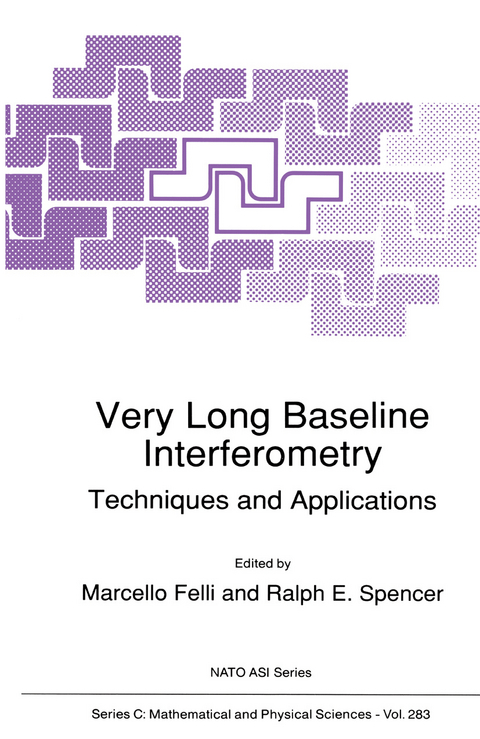
Very Long Baseline Interferometry
Springer (Verlag)
978-94-010-7595-4 (ISBN)
The quest for high resolution has preoccupied radio astronomers ever since radio waves were first detected from space fifty years ago. This venture was par ticularly stimulated by the discovery of quasars, and led to the development of interferometer techniques using baselines of transglobal dimensions. These meth ods have become known as Very Long Baseline Interferometry (VLBI). Arrays of radio telescopes situated all over the Earth (or even in space) are regularly used for researches in radio astronomy, reaching resolutions as small as a fraction of a milli arcsecond. The technique also allows the measurement of the positions of the radio telescopes to a few millimeters and so VLBI has become a major tool in geodesy and the study of the rotation of the Earth. VLBI has now passed the pioneer stage and is becoming a standard facility available to astronomers and geodesists, requiring the coordination of the operations of indpendently owned radio telescopes around the world. In Europe observatories from England, Federal Republic of Germany, France, Italy, Poland, Sweden and The Netherlands are coordinated in their VLBI activity by the European VLBI Network Consortium (EVN). The Programme Committee of the EVN allocates time to scientific projects on a routine basis three times a year. The Unites States has a similar arrangement of a network of independent radio observatories, and joint experiments using 'Global Network' are often made.
1 Fundamental VLBI Techniques.- 1. Basic Radio Astronomy.- 2. Fundamentals of Interferometry.- 3. Introduction to VLBI.- 4. The Effects of Propagation on VLBI Observations.- 5. Signal Flow at VLBI Antennas.- 6. An Introduction to Closure Phase and Self-Calibration.- 2 VLBI Techniques in Practice.- 7. Scheduling, Correlating and Postprocessing of VLBI Observations.- 8. Calibration Methods.- 9. Sensitivity.- 10. An Introduction to Deconvolution in VLBI.- 11. Mapping in Practice.- 12. Spectral Line VLBI.- 13. Introduction to Phase-Reference Mapping.- 14. Polarimetry.- 15. Geodesy VLBI Observables.- 3 Some Results in VLBI.- 16. Geodesy, Geodynamics and Astrometry using VLBI.- 17. Recent Results in Astronomy I: Extragalactic.- 18. Recent Results in Astronomy II: Pulsars and Stars.- 19. Recent Results in Astronomy III: Interstellar Masers.- 4 The Present and Future of VLBI.- 20. The European and U.S. VLBI Networks in 1988.- 21. Comparison with other Instruments.- 22. VLBI in the 1990’s.- 5 Contributed Papers.- List of Contributions.- Call for proposals.- Current Data on Telescopes of the European Network.
| Erscheint lt. Verlag | 21.4.2014 |
|---|---|
| Reihe/Serie | NATO Science Series C ; 283 |
| Zusatzinfo | XX, 438 p. |
| Verlagsort | Dordrecht |
| Sprache | englisch |
| Maße | 155 x 235 mm |
| Themenwelt | Naturwissenschaften ► Geowissenschaften ► Geophysik |
| Naturwissenschaften ► Physik / Astronomie ► Astronomie / Astrophysik | |
| ISBN-10 | 94-010-7595-6 / 9401075956 |
| ISBN-13 | 978-94-010-7595-4 / 9789401075954 |
| Zustand | Neuware |
| Haben Sie eine Frage zum Produkt? |
aus dem Bereich


